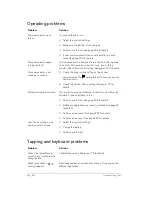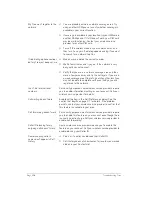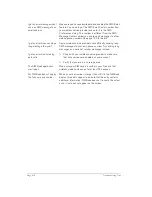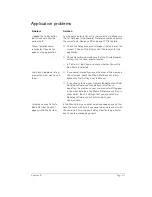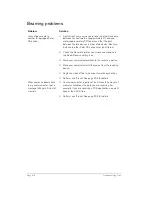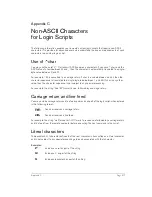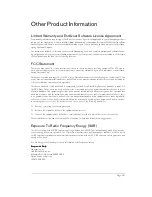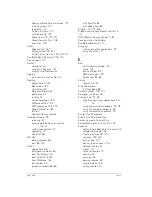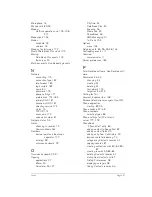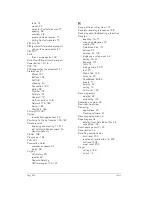
Appendix C
Page 217
Appendix C
Non-ASCII Characters
for Login Scripts
The following information enables you to create custom login scripts that require non-ASCII
characters. It is provided for advanced users who understand the use and requirements of such
characters in a custom login script.
Use of ^char
You may use the caret ( ^ ) to transmit ASCII command characters. If you send ^
char, and the
ASCII value of
char is between @ and _, then the character is automatically translated to a single-
byte value between 0 and 31.
For example, ^M is converted to a carriage return. If char is a value between a and z, then the
character sequence is translated to a single-byte value between 1 and 26. If char is any other
value, then the character sequence is not subject to any special processing.
For example, the string “Joe^M” transmits Joe, followed by a carriage return.
Carriage return and line feed
You may include carriage return and line feed commands as part of the login script, when entered
in the following format:
<
<
<
<c
cc
crrrr>
>
>
>
Sends or receives a carriage return
<
<
<
<llllffff>
>
>
>
Sends or receives a line feed
For example, the string “waitfor Joe<cr><lf>” waits to receive Joe followed by a carriage return
and line feed from the remote computer before executing the next command in the script.
Literal characters
The backslash ( \ ) character defines that the
next character is transmitted as a literal character,
and is not subject to any special processing ordinarily associated with that character.
Examples:
\
\\
\^
^
^
^
Includes a caret as part of the string
\
\\
\<
<
<
<
Includes a < as part of the string
\\
\\
\\
\\
Includes a backslash as part of the string
Summary of Contents for Treo 180
Page 1: ...Treo 180 Communicator User Guide Macintosh Edition...
Page 10: ...Page 10 Contents...
Page 36: ...Page 36 Entering Data in Your Communicator...
Page 78: ...Page 78 Common Tasks...
Page 166: ...Page 166 Application Specific Tasks...
Page 188: ...Page 188 Setting Preferences for Your Communicator...
Page 200: ...Page 200 Advanced HotSync Operations...
Page 216: ...Page 216 Troubleshooting Tips...
Page 218: ...Page 218 Non ASCII Characters for Login Scripts...




